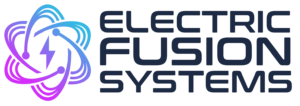A condensed excited matter called Rydberg Matter (RM) have been studied experimentally for 30 years, but have not sparked widespread attention yet, unlike ordinary Rydberg atoms. RM formed by clusters of Rydberg atoms at a solid surface have a longer lifetime compared to Rydberg atoms, and is liquid-like. This review describes how the RM state is generated, and its potential applications. These include using RM for research into catalysis, space phenomena and sensor applications, or for producing environmentally friendly energy. A background on RM is presented, with its structure and special properties, and the working principle of RM generation. The experimental set-ups, materials, and detectors used are discussed, together with methods to improve the amount of RM produced. The materials used for the catalysts are of special interest, as this should have a large influence on the energy of the RM, and therefore also on the applications.Currently most of the catalysts used are potassium doped iron oxide designed for styrene production, which should give the possibility of improvements. And as there is little knowledge on the exact mechanisms for RM formation, suggestions are given as to where research should start.
The world is still looking for new ways of producing clean energy, as it has been a long time since a truly new method has been developed. The current renewable energy sources are also mostly intermittent, only delivering energy when the conditions are right, so there is a need for green energy that can be turned on when required. For example, the “hydrogen society” has been developing for decades, but there still is not an environmentally friendly way of producing hydrogen that can rival natural gas on price. The usage of hydrogen would also benefit from an improved efficiency, and this is the concern of this review, describing how a condensed excited state of hydrogen atoms can improve efficiency for energy generation and enable multiple other applications. It should be of special interest to anyone researching hydrogen energy production.
Rydberg state is a general term applied to atoms and molecules with a high principal quantum number n, where atoms with n up to 1000 have been detected. This large n gives them their main properties of large sizes, high sensitivity to electric fields, large dipole moments, and very low ionization potentials. These Rydberg atoms can also form a condensed state, called Rydberg Matter (RM). Keeping the characteristic properties of the atoms, while having a longer lifetime and being liquid-like gives some interesting possibilities. These possibilities are getting closer to being realized, and in the coming years RM could have a drastic increase in how well it is known. For example, RM is currently generated using a potassium doped iron oxide catalyst, like the ones used for dehydrogenation of ethylbenzene to styrene. So, the research into RM could also give insight as to why alkali metals are such good promoters. And this could be applicable to the iron catalysts used in Fischer–Tropsch and ammonia synthesis also, as Rydberg species have been detected from ammonia catalysts, leading to a very large potential impact on both economy and environment.
The reason for writing this review now is that there are more applications, being developed that utilize RM, and these applications demand higher quantities of RM than what is needed for research. One of which is the clean energy generated by only using hydrogen as a fuel. Previous reviews on RM have focused on the properties of the clusters that make up RM, and on the conditions for forming RM in a gas phase versus on a surface. And a special issue called “Rydberg-Matter and Excited-State Clusters” has also been publish in the field. This review presents what is known, and the information that is needed, about how RM is produced, some of its possible applications, and how close they are to realization.

